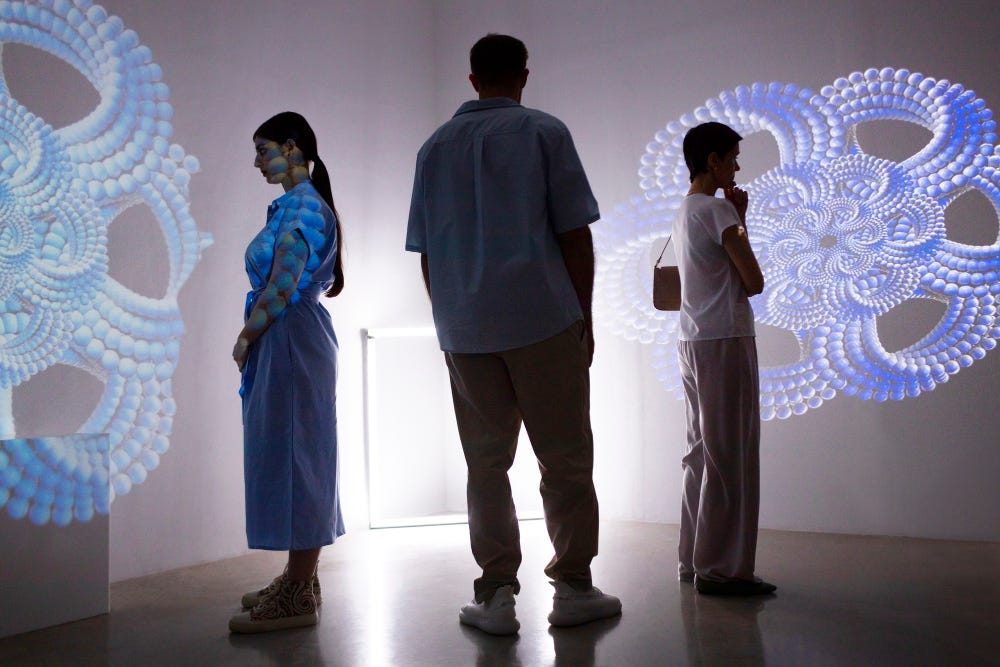A Framework for Complex Experiential Spaces
Adopting design system thinking in experiential design isn't about constraining creativity – it's about creating frameworks that enable consistent excellence while supporting innovation. Through careful implementation and continuous refinement, this approach can transform how we create and maintain complex spatial experiences.
As a spatial designer, my journey into systematic design thinking began when traditional project-by-project approaches no longer sufficed for increasingly intricate experiential spaces. The complexity of coordinating physical and digital elements, managing multi-disciplinary teams, and ensuring consistent quality across different contexts demanded a more structured methodology.
Finding a New Approach
The breakthrough came from studying design systems in other disciplines. While these systems are typically associated with digital design, their core principles proved remarkably applicable to spatial experiences:
Component Thinking
Breaking down complex experiences into modular elements
Creating reusable interaction patterns
Developing standardized integration points
Documentation and Guidelines
Clear specifications for implementation
Integration protocols for different disciplines
Quality control standards
Practical Application
Here's how we translated these principles into spatial design:
Experience Modules
Standardized zones for different types of engagement
Flexible content presentation systems
Adaptable interactive elements
Journey Architecture
Clear user flow frameworks
Modular experience sequences
Adaptive timing systems
Multi-disciplinary Integration
The systematic approach particularly excelled in coordinating different disciplines:
Collaboration Framework
Unified documentation system
Clear handover protocols
Standardized integration points
Quality Control
Implementation standards
Performance metrics
Review processes
Key Learnings
Through implementation across multiple projects, we discovered:
Start Small
Begin with core components
Test and refine before scaling
Document everything meticulously
Focus on Flexibility
Design for adaptation
Create clear modification guidelines
Build in room for innovation
Prioritize Communication
Establish common terminology
Create clear roles and responsibilities
Maintain feedback loops
Measurable Impact
This systematic approach delivered significant benefits:
Efficiency Gains
Streamlined implementation
Optimized resource allocation
Simplified content updates
Quality Improvements
Consistent experience delivery
Seamless integration
Enhanced maintainability
Implementation Tips
For fellow designers considering this approach:
System Architecture
Define clear objectives
Create modular frameworks
Establish quality standards
Documentation
Develop clear guidelines
Create implementation protocols
Maintain living documentation
Team Enablement
Comprehensive training frameworks
Clear processes
Feedback systems
Future Considerations
As experiential design evolves, systematic approaches become increasingly valuable:
Scalability
Design for growth
Plan for technology evolution
Create adaptable frameworks
Innovation
Build in flexibility
Create update protocols
Maintain creative spaces
Our industry stands at a fascinating intersection where physical and digital experiences increasingly merge, creating both unprecedented challenges and opportunities. The systematic approach described here transcends being merely a methodology for current projects – it serves as a foundation for future innovation. Through this journey, I've discovered that design systems in spatial design derive their true value not from standardization, but from their ability to amplify creativity and unlock possibilities that would otherwise be too complex to achieve.
An Invitation to Fellow Designers
As you consider implementing systematic thinking in your own practice, remember that this isn't about perfection – it's about progress. Start small, but think big. Document your journey. Share your learnings. Each designer who adopts and adapts these principles adds to our collective understanding of what's possible in experiential design.
The future of our field lies not just in the spaces we create, but in the systems we develop to create them. As we continue to push the boundaries of what's possible in experiential design, systematic thinking will become not just a useful tool, but an essential foundation for innovation.
The journey toward systematic thinking in spatial design is ongoing, and each project brings new insights and possibilities. As we look to the future, one thing becomes clear: the intersection of creative freedom and systematic thinking is where true innovation flourishes. It's in this space that we'll continue to discover new ways to create experiences that inspire, engage, and transform.
Let's embrace this evolution not as a departure from traditional design principles, but as an enhancement that allows us to achieve even greater creative heights. The future of experiential design is systematic, scalable, and more creative than ever before.





